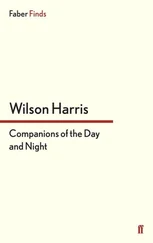A Companion to Motion Pictures and Public Value
Здесь есть возможность читать онлайн «A Companion to Motion Pictures and Public Value» — ознакомительный отрывок электронной книги совершенно бесплатно, а после прочтения отрывка купить полную версию. В некоторых случаях можно слушать аудио, скачать через торрент в формате fb2 и присутствует краткое содержание. Жанр: unrecognised, на английском языке. Описание произведения, (предисловие) а так же отзывы посетителей доступны на портале библиотеки ЛибКат.
- Название:A Companion to Motion Pictures and Public Value
- Автор:
- Жанр:
- Год:неизвестен
- ISBN:нет данных
- Рейтинг книги:3 / 5. Голосов: 1
-
Избранное:Добавить в избранное
- Отзывы:
-
Ваша оценка:
- 60
- 1
- 2
- 3
- 4
- 5
A Companion to Motion Pictures and Public Value: краткое содержание, описание и аннотация
Предлагаем к чтению аннотацию, описание, краткое содержание или предисловие (зависит от того, что написал сам автор книги «A Companion to Motion Pictures and Public Value»). Если вы не нашли необходимую информацию о книге — напишите в комментариях, мы постараемся отыскать её.
A Companion to Motion Pictures and Public Value
Companion
A Companion to Motion Pictures and Public Value
A Companion to Motion Pictures and Public Value — читать онлайн ознакомительный отрывок
Ниже представлен текст книги, разбитый по страницам. Система сохранения места последней прочитанной страницы, позволяет с удобством читать онлайн бесплатно книгу «A Companion to Motion Pictures and Public Value», без необходимости каждый раз заново искать на чём Вы остановились. Поставьте закладку, и сможете в любой момент перейти на страницу, на которой закончили чтение.
Интервал:
Закладка:
The importance of film becomes more apparent when we consider attempts to represent an environment, as opposed to an object. Here appreciative aptness is harder to achieve, given that environments have distinct properties related to the experience of moving through the environment, being enveloped by it, and so on. But one of the distinctive features of film is surely its capacity to convey precisely these sorts of spatial properties. To be sure, watching a film where the camera moves through, and is surrounded by, a certain environment is not the same as moving through and being surrounded by that environment. Also, how exactly we relate perceptually to the space depicted on screen is a large issue for philosophy of film and perception. Yet, it seems clear that cinematic representations can be appreciatively apt with respect to at least some of the immersive spatial features of the environments they depict.
That said, there are certain features of environments and objects that even film will be unable to capture: the smells an object offers, for instance, or the tactile sensations involved in being located within an environment. Perhaps only some kind of science fiction style virtual reality simulation could capture such features (as imagined, for example, by Danto 2004). But even in these cases, there is surely a role for imagination in filling out some of the features of environments that our representations are unable to capture. I can’t feel the pressure of the water against my skin as I watch underwater footage, but I can certainly imagine, based on my own experience, how that aspect of the environment would present itself.
Some philosophers have considered the role of imagination with regard to the aesthetics of nature, but have done so, as usual, in relation to our direct experience of the environment. Emily Brady, for example, offers a rich account of ways in which imagination can inform experience of our natural surroundings: by allowing us to visualize the temporally distant origins and history of natural things; by allowing us to experience an imaginative kind of “seeing in” (as when we see a gnarled tree as a wrinkled, old face); by allowing us to imaginatively take on the perspectives of natural things, and so on (Brady 2003). If these imaginative acts are a legitimate way for us to expand our direct experience of nature, they may also play a role in expanding experience mediated through film. Such a role for imagination, combined with the expanded representational possibilities of film, casts worries about the impoverishment of mediated representation of nature in quite a different light. 14
Film and the Appreciative Shift
Like poverty of representation, the appreciative shift is a genuine concern, historical and contemporary, for the mediated appreciation of nature. Indeed, it would be naïve to think that we could have any interesting representation of nature that presented nature purely “as it is,” and whose appreciation lacked any human, interpretive element. Nonetheless, even in the genres of landscape painting and photography, the shift to this human element is rarely total. As noted earlier, Ansel Adams’ photograph of Half Dome puts compositional elements to the fore, but it nonetheless does present features of Half Dome, and these features are part of what we appreciate. In general, images can sustain interest in both their compositional, artistic elements and their depicted subjects: Jerrold Levinson’s analysis of erotic art offers a helpful analogy here. Levinson (2005) describes erotic art precisely in terms of attention shifting between the artistic composition of the image and its suggestive subject matter. Indeed, for Levinson this constant interplay is part of the distinctive appeal of erotic art, and surely much artistic nature photography and landscape painting involves a similar interplay between content and image.
As mentioned, appreciation can shift not only to compositional features of a representation, but also to the expressive qualities, which the artist, as it were, imparts to the work. The latter sort of shift, like the former, is rarely a total one, and moreover in some cases may not really represent a shift “away from the subject” of the representation at all. 15For while the expressive quality of a representation can divert appreciation away from the natural thing that is the work’s subject, it is perhaps more frequently the case that the expressive element of the work calls attention to an expressive quality of that natural subject. Tom Thomson’s The Jack Pine (1916), for example, certainly has an expressive, emotional quality: something of a cold and unsettling serenity. But though Thomson carefully emphasized this quality in creating the image, this is a quality possessed by the subject of the painting—the landscape of Northern Ontario. Here we have not an imposition of the painter’s feeling onto the landscape, but rather a lining up of the expressive aspect of the image with the qualities of the landscape itself. 16
Even with respect to genres such as landscape painting and photography, then, the danger of the appreciative shift has been exaggerated. But this exaggeration is furthered by a narrow focus on these particular media. Once again, other art forms provide a different perspective.
Wildlife painting, for example, provides an instance where compositional elements and expressive aims have traditionally been treated as less significant than subject matter. 17However, it is again film that provides the most salient corrective here, for the narrative structure of a typical nature film, coupled with the immersive quality of the medium, puts its subject matter firmly into the foreground in a way that painting and photography cannot. In a still image, an animal or an environment may slip into the background of an appreciator’s awareness, as a mere formal element or signifier of artistic meaning, Snow Exposure being a case in point. But in a film documenting the growth, movement, and behavior of said animals, such a radical appreciative shift hardly seems possible.
It may be objected that, in the context of film, the appreciative shift is no less prevalent, but only takes a different form. Although a film may purport to document the life of an animal, in fact what is shown may be a narrative contrived by the filmmakers, and driven more by ideology or dramatic necessity than anything to do with the subject. However, although the history of nature film furnishes many examples of this approach (see Mitman 1999; Bousé 2000), it is hardly an inherent feature of the art form, much less an ideal for it. It is true that due to the many practical and ethical obstacles with filming animals, cinematic representations of them require a high degree of construction, and the use of techniques of dramatization, re-enactment and editing. So what we see in a nature documentary is almost never something that “actually happened” just as it is represented on screen. But that does not entail that what is appreciated when viewing such a film is not the look, behavior and life cycle of the animals represented.
So to sum up, I have argued that a consideration of film again helps us to see that, while mediated appreciation has its limitations and potential pitfalls, it would be an overreaction to reject the very idea. Artistic representations do offer us a way, never a pure one to be sure, of aesthetically appreciating nature in the absence of direct experience. This, however, is a rather defensive conclusion. Is mediated appreciation merely a passable substitute for direct experience of nature, as a photograph of a Degas canvas might be a passable substitute for the artwork? Or might mediated appreciation play a more significant role in the aesthetics of nature? To pursue these questions, I turn now to a closer look at the notion of appreciative aptness.
Читать дальшеИнтервал:
Закладка:
Похожие книги на «A Companion to Motion Pictures and Public Value»
Представляем Вашему вниманию похожие книги на «A Companion to Motion Pictures and Public Value» списком для выбора. Мы отобрали схожую по названию и смыслу литературу в надежде предоставить читателям больше вариантов отыскать новые, интересные, ещё непрочитанные произведения.
Обсуждение, отзывы о книге «A Companion to Motion Pictures and Public Value» и просто собственные мнения читателей. Оставьте ваши комментарии, напишите, что Вы думаете о произведении, его смысле или главных героях. Укажите что конкретно понравилось, а что нет, и почему Вы так считаете.












